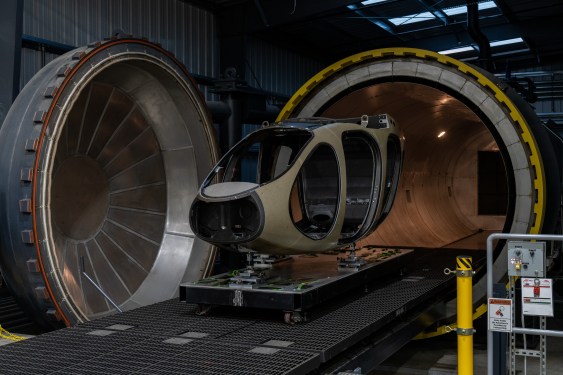Electric Vertical Takeoff and Landing (eVTOL) Company Joby Aviation Has Taken Another Step On Its Path To Start A Commercial Air Taxi Service By 2025.
Electric vertical takeoff and landing (eVTOL) technology represents a groundbreaking advancement in the aviation industry, promising to redefine air travel by enabling fixed-wing aircraft to ascend vertically from the ground. Joby Aviation, a rapidly growing innovation hub based in Bend, Oregon, has made significant strides in this pursuit, taking another crucial step toward its ambitious goal of launching a commercial air taxi service by 2025.
The Electric Vertical Takeoff and Landing (eVTOL) Initiative
At the heart of Joby’s strategy is its commitment to developing fully electric vertical takeoff and landing (eVTOL) technology. This initiative aims to address some of the most pressing challenges in traditional aviation, such as environmental impact, noise pollution, and high operational costs. By combining advanced aerodynamics with regenerative braking systems, Joby seeks to create aircraft capable of performing vertical takeoff and landing without relying on runway-based rollbacks.
The company’s progress has been marked by several key milestones. Earlier this year, Joby announced the successful completion of its first phase of development, which involved constructing a "company-conforming prototype." This prototype served as a blueprint for the full-scale eVTOL, ensuring that all components met stringent quality and performance standards. The creation of this prototype was a pivotal moment in Joby’s journey, as it marked the culmination of months of meticulous engineering and testing.
Regulatory Compliance and FAA Progress
In late 2023, Joby demonstrated its commitment to meeting the highest industry standards by engaging with the Federal Aviation Administration (FAA) to complete certain regulatory steps. This collaboration was essential in advancing the company’s eVTOL program toward production readiness. The FAA has been instrumental in shaping the development of eVTOL technology, and Joby’s progress in this regard reflects its dedication to aligning with industry regulations.
One of the most notable achievements thus far is the successful passage of a critical regulatory review conducted by the FAA. This milestone validated the company’s design process and ensured that the eVTOL met the necessary technical requirements for safe operation under Part 23 of the Federal Aviation Regulations. The completion of this phase has been widely celebrated within the industry, as it underscores Joby’s capability to deliver a cutting-edge solution compliant with global aviation standards.
Quality Management System and Final Assembly
The development of the company-conforming prototype was not merely a step in the creation of an eVTOL; it was also a critical component of Joby’s quality management system. This system encompasses several key elements, including:
- Component Tracking: Every part installed on the aircraft is meticulously tracked throughout the manufacturing process to ensure accuracy and consistency.
- Design Drawings: All components are designed using precise blueprints that guide every technician in their work.
- Environmental Conditions: The manufacturing environment is controlled to prevent any external factors from affecting the quality of the final product.
- Technician Actions: Each technician’s tasks are documented, ensuring that no step is overlooked and that all processes adhere to established protocols.
These measures have been integral in achieving the desired level of precision and reliability for the eVTOL. The completion of the prototype marked a significant milestone in Joby’s journey, as it validated the effectiveness of its quality management system and set the stage for mass production.
Building The EVTOL’s Framework
The process of constructing the eVTOL’s framework begins with the creation of major components: the wing, tail, and fuselage. Each of these elements is carefully designed to contribute to the aircraft’s performance characteristics. Once these fundamental structures are in place, the next phase involves fitting all other components together.
This includes the addition of wiring, which powers various systems such as navigation, communication, and control. The integration of advanced electronics ensures that the eVTOL operates smoothly and efficiently. Additionally, the framework is equipped with actuation systems, which enable precise control over the aircraft’s movements, and propulsion systems, which provide the necessary thrust for takeoff and landing.
The Facility’s Capacity
The eVTOL production facility, once fully operational, will be capable of producing tens of aircraft per year. This scalability represents a significant leap forward in Joby’s capabilities, enabling the company to meet growing demand while maintaining high standards of quality and safety. The production line is designed with advanced manufacturing techniques that ensure each aircraft is built to exact specifications.
Regulatory Collaboration
The eVTOL program has been a collaborative effort between Joby and the FAA. This partnership has been instrumental in advancing the development of safe and efficient eVTOL technology. By working closely with industry regulators, Joby has been able to refine its designs and address any challenges that arise during testing.
Conclusion
The successful completion of the company-conforming prototype represents a major milestone in Joby’s journey toward becoming a leader in electric vertical takeoff and landing technology. The regulatory compliance review is a testament to the company’s commitment to meeting high industry standards, while the quality management system ensures that each eVTOL meets the highest possible level of precision.
As the company continues to refine its designs and expand its production capabilities, Joby is poised to make a significant impact on the aviation industry. The development of fully electric vertical takeoff and landing technology not only offers innovative solutions for air travel but also paves the way for a more sustainable and efficient future in transportation.











